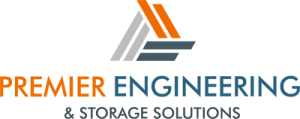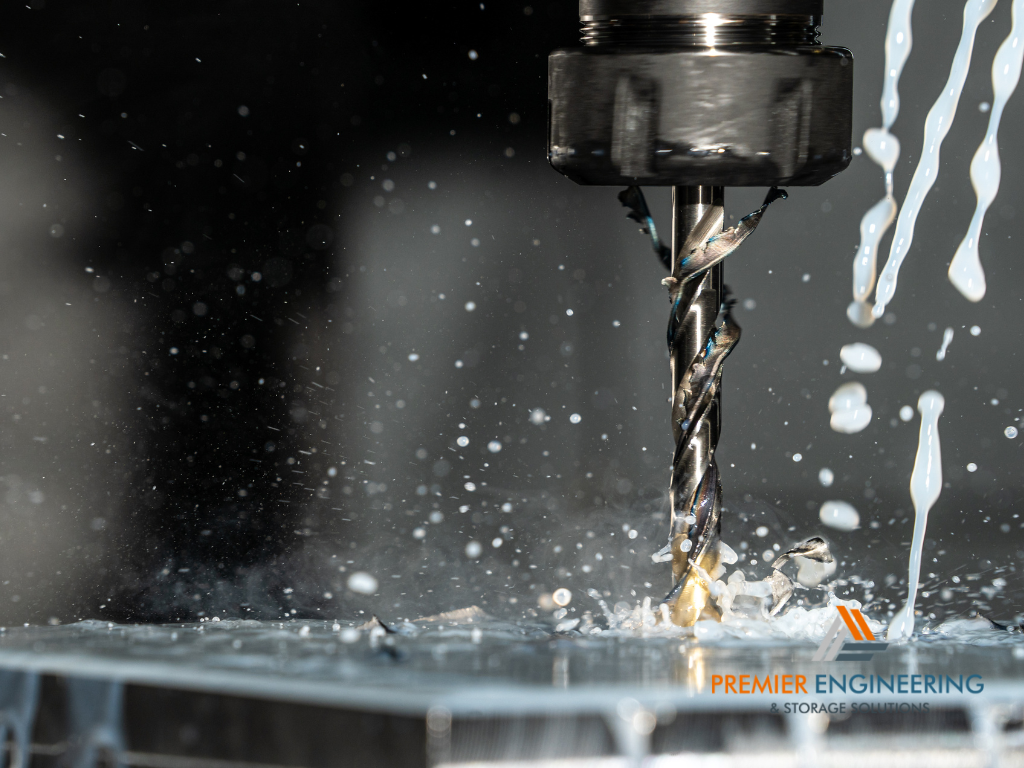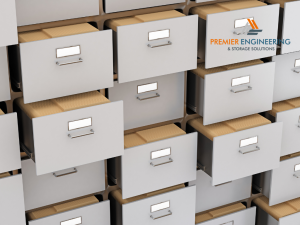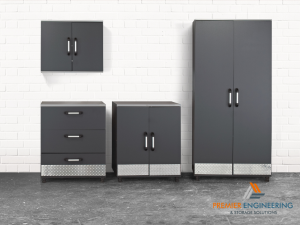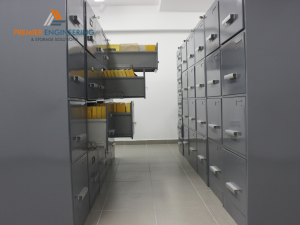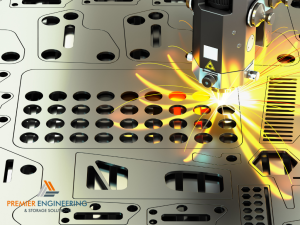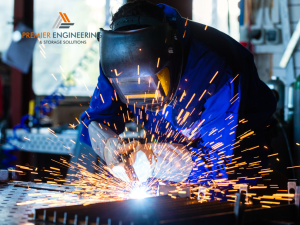CNC machines are automated tools controlled by a computer that can perform a variety of manufacturing tasks with high precision and consistency. In the realm of cutting applications, several types of CNC machines are commonly used, each offering unique capabilities suited to different materials and project requirements. These include CNC laser cutters, CNC plasma cutters, CNC waterjet cutters, and CNC routers.
- CNC Laser Cutting Machines: Utilize a focused lasers beam to cut through materials with high precision, making them ideal for intricate designs and thin materials.
- CNC Plasma Cutting Machines: Employ an accelerated jet of hot plasma to cut through electrically conductive materials, suitable for thicker metals.
- CNC Waterjet Cutting Machines: Use a high-pressure jet of water, often mixed with an abrasive substance, to cut through a wide variety of materials, including metals, stone, and composites.
- CNC Router Cutting Machines: Typically used for cutting softer materials such as wood, plastics, and some metals, routers are versatile and capable of producing complex shapes.
Importance of Selecting the Right CNC Machine
Choosing the appropriate CNC machine for your sheet metal manufacturing needs is crucial to ensuring efficient production, high-quality output, and cost-effectiveness. The right machine can significantly impact your manufacturing process by:
- Enhancing Precision and Quality: Different CNC machines offer varying levels of precision. Selecting a machine that matches your precision requirements ensures high-quality cuts and reduces material wastage.
- Increasing Productivity: The cutting speed and automation capabilities of the CNC machine influence production rates. A machine that aligns with your production needs can maximize throughput and minimize downtime.
- Cost Efficiency: Initial investment and operational costs vary among CNC machinees. Choosing the right one helps manage expenses by balancing upfront costs with long-term operational savings.
Understanding Your Project Requirements

Assessing Material Types and Thickness
When selecting a CNC cutting machine, it’s essential to consider the types of materials and their thicknesses that you will be working with. Different machines are optimized for different materials and thickness ranges.
- Material Types: Identify the materials you commonly use in your projects. CNC laser cutters are excellent for thin metals and intricate designs, whereas plasma cutters are more suitable for thicker, conductive metals. Waterjet cutters can handle a wide variety of materials, including metals, composites, and stone.
- Material Thickness: Determine the maximum and minimum thicknesses of the materials you plan to cut. CNC plasma and waterjet cutters are typically better suited for thicker materials, while laser cutters excel with thinner materials.
Precision and Tolerance Needs
Precision and tolerance are critical factors in sheet metal manufacturing, affecting the fit and function of the final product.
- Precision Requirements: High-precision projects, such as those involving detailed patterns or components that must fit together precisely, may benefit from CNC laser cutting due to its fine cutting capabilities.
- Tolerance Levels: Understand the acceptable tolerance levels for your projects. Tighter tolerances may require more advanced CNC machines with higher precision capabilities. Ensuring your machine can consistently meet these tolerances is vital for maintaining quality and reducing waste.
Types of CNC Machines for Cutting
CNC Laser Cutting Machines
CNC laser cutting machines use a high-powered laser beam to cut materials with exceptional precision. The laser melts, burns, or vaporizes the material, leaving a clean, high-quality edge.
- Features: High precision, ability to cut intricate designs, minimal material deformation.
- Benefits: Ideal for thin materials and detailed work, produces clean cuts with minimal post-processing required.
CNC Plasma Cutting Machines
CNC plasma cutting machines use a jet of hot plasma to cut through electrically conductive materials. They are known for their ability to cut thick metals quickly and efficiently.
- Overview: Suitable for cutting metals like steel, stainless steel, and aluminum.
- Benefits: Fast cutting speeds, ability to cut thick materials, lower operational costs compared to laser cutters.
CNC Waterjet Cutting Machines
CNC waterjet cutting machines use a high-pressure stream of water, often mixed with an abrasive, to cut through a variety of materials. This method is versatile and can cut materials without generating heat, which can alter the material properties.
- Advantages: Can cut a wide range of materials, including metals, stone, and composites, without heat-affected zones.
- Applications: Used in industries requiring precise cuts in diverse materials, such as aerospace and automotive.
CNC Router Cutting Machines
CNC routers are versatile machines used for cutting softer materials like wood, plastics, and some metals. They are known for their ability to produce complex shapes and detailed work.
- When to Use: Ideal for projects requiring detailed work in softer materials, such as cabinetry, sign making, and plastic fabrication.
- Benefits: Versatility in materials, capability for intricate designs, relatively lower cost for soft material applications.
Evaluating Cutting Speed and Efficiency

How Cutting Speed Impacts Production
Cutting speed is a crucial factor in determining the efficiency and productivity of your CNC cutting operations. Faster cutting speeds can lead to higher throughput and reduced production times.
- Production Efficiency: High cutting speeds enable quicker completion of tasks, allowing for more parts to be produced in a shorter timeframe. This is particularly beneficial in high-volume manufacturing environments.
- Material Considerations: Different materials respond differently to cutting speeds. For example, metals may require slower speeds for precision cuts, whereas plastics can be cut at higher speeds.
Comparing Cutting Speeds of Different CNC Machines
Each type of types of CNC machine has different cutting speeds, which affect their suitability for various applications.
- Laser Cutters: Typically offer high precision but moderate cutting speeds, suitable for detailed and intricate cuts.
- Plasma Cutters: Known for high cutting speeds, especially effective for cutting thicker metals quickly.
- Waterjet Cutters: Offer moderate cutting speeds with the advantage of cutting a wide range of materials without heat.
- Router Cutters: Speed varies based on material type and complexity of the design, generally faster for softer materials.
Cost Considerations for CNC Machines
Initial Investment and Operating Costs
When selecting a CNC cutting machine, it’s essential to consider both the initial investment and ongoing operating costs. Different types of CNC machines have varying price points and operational expenses.
- Initial Investment: The upfront cost of purchasing a CNC machine can vary significantly depending on the type and complexity of the machine. For example, CNC laser cutters tend to be more expensive than plasma or router cutters due to their advanced technology and precision capabilities. Waterjet cutters also have a high initial cost due to their versatility and the need for high-pressure pumps.
- Operating Costs: Beyond the purchase price, consider the operating costs, which include energy consumption, maintenance, consumables (like cutting fluids or gases), and labor. For instance, plasma cutters require a constant supply of gases, while waterjet cutters need abrasive materials. Laser cutters consume significant power and may require more frequent maintenance due to their complexity.
Long-Term Cost Efficiency
Evaluating the long-term cost benefits of different CNC machines is crucial for making a cost-effective investment.
- Durability and Lifespan: Some CNC machines, like those designed for heavy-duty applications, may have a longer lifespan and higher durability, leading to lower long-term replacement costs. Investing in a robust machine can save money over time by reducing the frequency of replacements.
- Energy Efficiency: Machines that consume less energy can significantly reduce operational costs. For example, newer models of CNC laser cutters are often more energy-efficient than older ones, providing long-term savings on electricity bills.
- Maintenance and Repair Costs: Machines that require less frequent maintenance or have lower repair costs can be more cost-effective in the long run. Consider the availability of spare parts and the ease of finding qualified technicians to service the machine.
Software and Compatibility

Importance of CNC Software in Sheet Metal Manufacturing
CNC software plays a critical role in controlling and optimizing the performance of CNC machines. It translates design files into machine-readable code, allowing for precise and efficient cutting.
- Control and Precision: Advanced CNC software provides better control over cutting parameters, such as speed, depth, and path. This ensures higher precision and consistency in cuts, which is vital for sheet metal manufacturing.
- Optimization: Good software can optimize cutting paths and nesting, reducing material waste and increasing efficiency. It also allows for real-time adjustments and monitoring, enhancing overall productivity.
Compatibility with Existing Systems
Ensuring that your new CNC machine integrates well with your existing software and systems is essential for a seamless operation.
- Software Integration: Check if the CNC machine is compatible with your current CAD/CAM software. Compatibility ensures that you can continue using your existing design files and workflows without significant changes.
- System Upgrades: Sometimes, integrating a new CNC machine may require upgrading your software or systems. Consider the costs and effort involved in these upgrades when making your decision.
Maintenance and Support
Maintenance Requirements for Different CNC Machines
Each type of CNC cutting machine has specific maintenance needs to ensure optimal performance and longevity.
- Laser Cutters: Require regular cleaning of lenses and mirrors, checking and adjusting beam alignment, and replacing consumables like gas and optics as needed.
- Plasma Cutters: Need periodic inspection and replacement of consumables such as nozzles and electrodes, as well as checking the gas supply system.
- Waterjet Cutters: Maintenance involves monitoring the high-pressure pump, replacing seals and nozzles, and ensuring the abrasive feed system is functioning correctly.
- Router Cutters: Require routine inspection of cutting bits, cleaning and lubrication of moving parts, and ensuring the spindle is in good condition.
Access to Technical Support and Spare Parts
Reliable technical support and availability of spare parts are critical for maintaining the efficiency and uptime of your CNC machine.
- Technical Support: Choose a CNC machine provider that offers robust technical support, including remote assistance, on-site service, and comprehensive training for your operators.
- Spare Parts Availability: Ensure that spare parts are readily available and can be quickly sourced when needed. This minimizes downtime due to maintenance and repairs, keeping your production line running smoothly.
Conclusion
Selecting the right CNC cutting machine involves considering several critical factors, including the types of CNC machines, project requirements, cutting speed and efficiency, cost considerations, software compatibility, and maintenance needs. Each of these factors plays a vital role in determining the most suitable machine for your sheet metal manufacturing needs.
